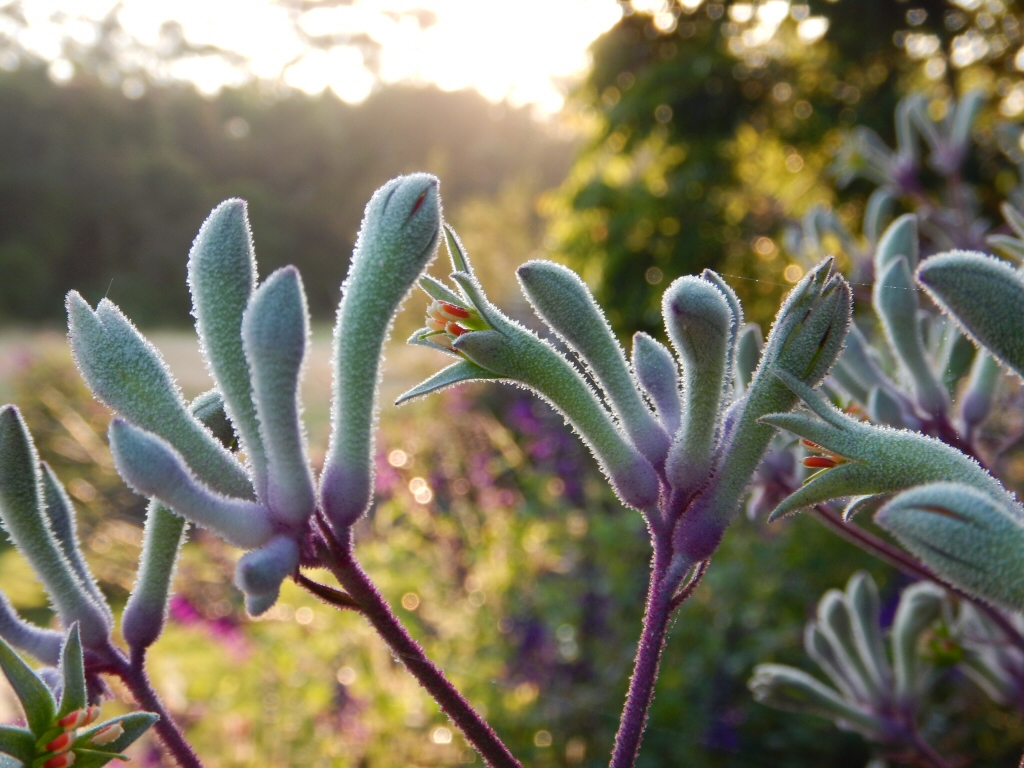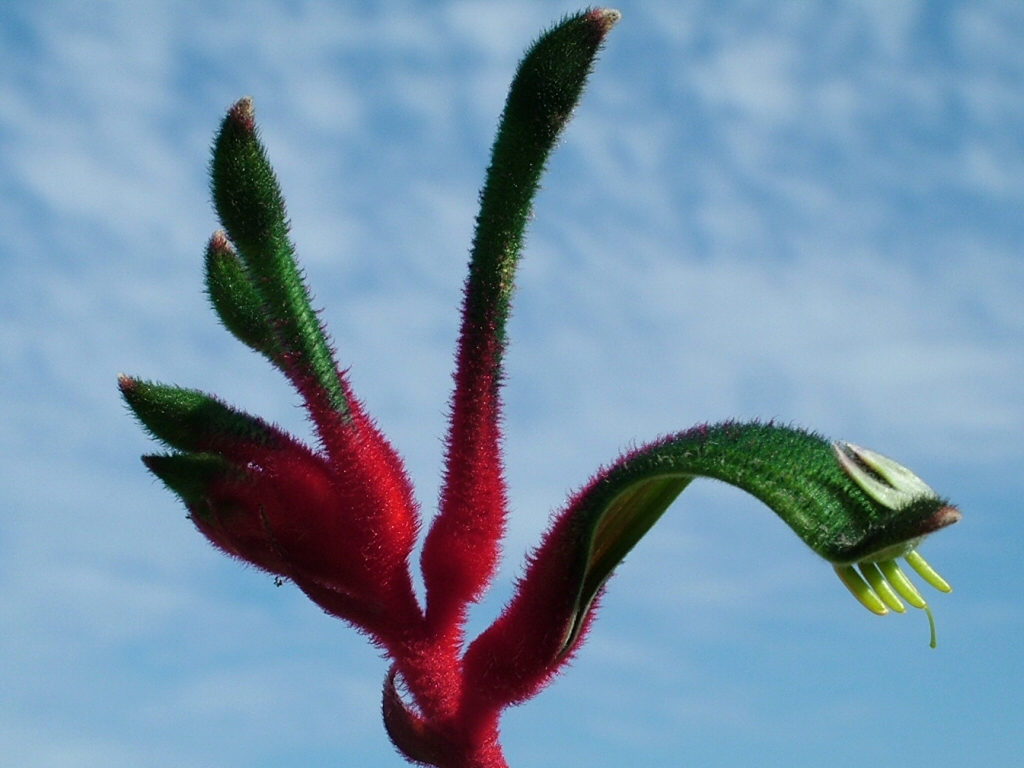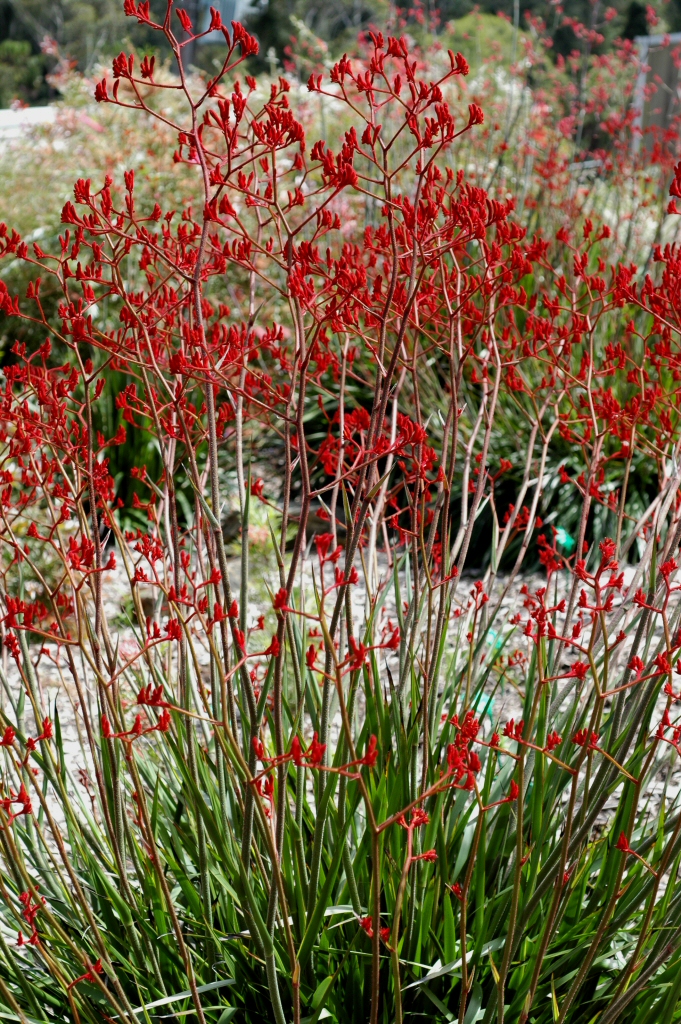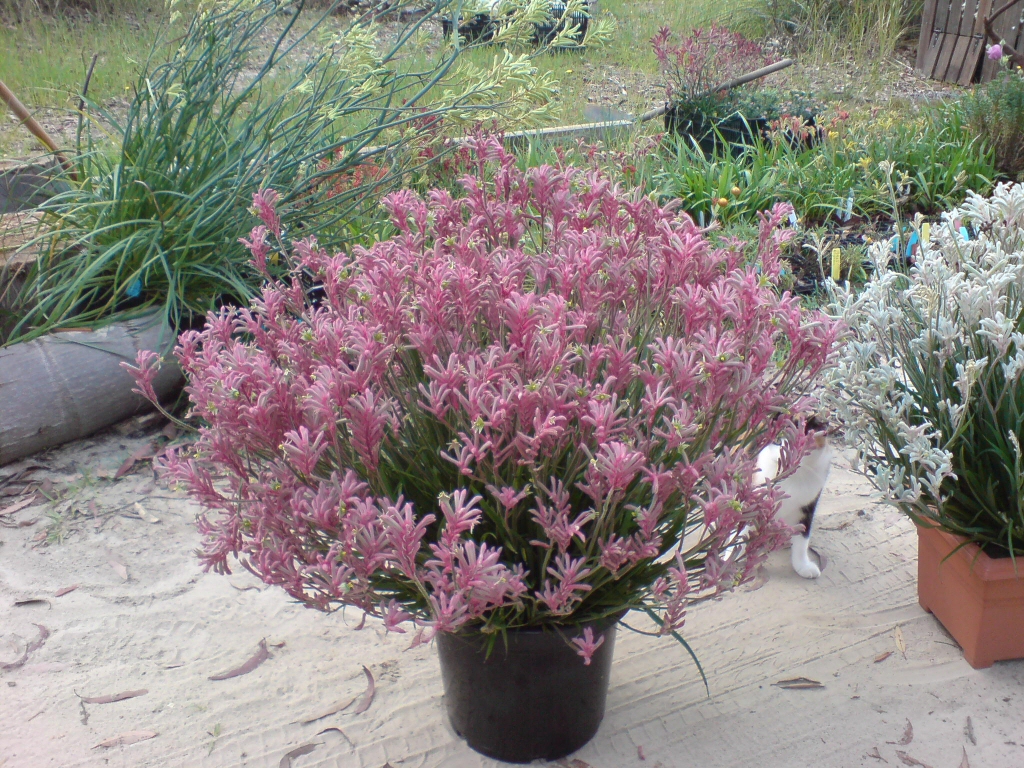I’ve got a bit of a one track mind this month. Think felty furry flowers. Think Skippy the Bush Kangaroo. Think about a plant that started off in one state of Australia, and now gets planted from far north Queensland to Tasmania and has gone out to the world to be admired and grown widely.
As a plant breeder with a life long passion for our unique and iconic kangaroo paw, I am proud to be involved with a very special event at the very special Royal Botanic Garden Cranbourne in November 2016. If you have never been to this garden devoted to Australian natives and innovative landscaping, November will be the time to go, as they are hosting a month long Kangaroo Paw Festival. There will be family friendly events like a picnic on the weekend of the 19th and 20th of November, with the official launch of my new tough tall paw ‘Landscape Violet’ on the 19th, with plants available for sale. Don’t miss the art exhibition too.
Kangaroo paw care in Spring
At this stage of the season a little tender loving care can pay huge dividends in terms of the flower display you get. Most species and cultivars are currently pushing up flower stalks and they need an uninterrupted supply of water and nutrients if the flowers are to reach their full potential. If your weather is unseasonally hot and/or dry, then make sure you do not allow your paws to reach the stage where the developing flower stems start to wilt. Even if you get water onto a wilted plant in time, you are still likely to get a bend in the stem that can be avoided. If it is too late, you are likely to get a small and misshapen flower.
I also like to feed my kangaroo paws with liquid that I get from my worm farm while they are budding up. I make sure it is diluted to the colour of weak tea and pour it on liberally. A weekly application means that the plant is kept moist and well fed while the flowers develop too. An alternative is to apply around the base of the plant a generous handful of fertiliser such as Bush Tucker (that I helped formulate so I know it works well), and ensure that you water it well to help the nutrients get into the soil around the roots and really fill out the developing flower stems. Several gardeners I know apply chicken manure to their tall paw varieties with great success…I’ve heard many people over the years say that natives don’t like to be fertilised and that all natives need low phosphorus, but the right fertiliser at the right time can lead to great results. This is going to be a good topic for a future newsletter!
Kangaroo Paw Variety Selection
The Cranbourne Kangaroo Paw Celebration will be a wonderful place to showcase all the different forms, colours and variations of paws. You’ll be able to see the wide variety of the original species plants that grow in the wild which inspired us breeders to want to bring them into your garden. Plus there will be many of the cultivars that have been under development for the last few decades on show and mass planted. When you consider European plants have had hundreds of years of breeding work from many different nursery people, you can see that there are still plenty of new plants still to come.
Most varieties on offer in garden centres are the smaller cultivars that look spectacular in a pot, and that transport well. The taller kangaroo paws tend to be more long-lived than the shorter varieties….I have seen tall kangaroo paw varieties go on for a couple of decades as garden plants if the clumps are well fertilised and divided every few years to help maintain their vigour. The taller varieties tend to be naturally less prone to leaf damaging fungal disease, though they can still get some blackening when under stress which can be mistaken for disease. I still remember well visiting a nursery that had sprayed their plants with a fungicide to prevent leaf spot, but the chemical burnt the foliage and caused extensive blackening of the foliage. In particular the tall varieties are much better able to resist the attack of root and collar rotting fungal pathogens that are usually the thing that kills the shorter kangaroo paw varieties and wild species.




